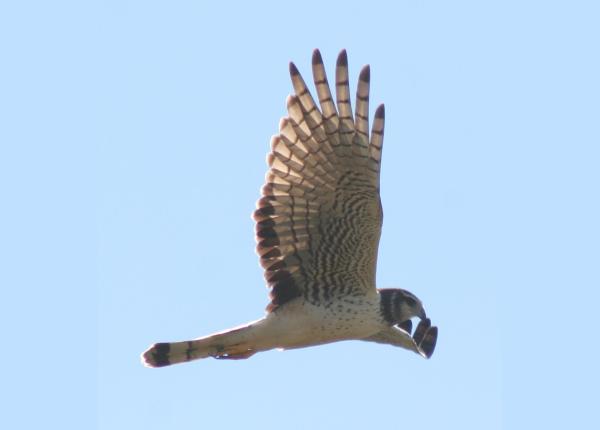Did You Know?
- Some populations of the Long-winged Harrier are migratory
- Black-headed Ducks have been documented laying their eggs in Long-winged Harrier nests in Argentina, relying on the harriers to raise their young. This is known as brood parasitsm.
How The Peregrine Fund is Helping
Though The Peregrine Fund does not work directly with Long-winged Harriers, our efforts in scientific research, habitat conservation, education, and community development help conserve birds of prey around the world. We also supply literature to researchers from our avian research library, which helps scientists around the world gather and share important information on raptor conservation. Our work with the Neotropical Raptor Network helps conserve raptors by fostering collaboration and communication among raptor enthusiasts in the region. And, finally, our support of the Global Raptor Information Network gives raptor researchers tools to more efficiently conduct their own studies while contributing to a global program. It also provides citizen scientists a way to participate in raptor science and conservation.
Where They Live
Found throughout much of South America and the island of Trinidad, this species inhabits marshlands, flooded llanos, wet pastures, open fields, and areas along roads in lowlands below 1,000 m.
What They Do
True to its name, the Long-winged Harrier has lovely, long and elegant wings which it uses to fly in low, graceful flights over grasslands and other open areas. Like other harriers, this species has something very special in common with owls. Can you guess what it is? Though it doesn't hunt at night like many owls do, it still needs to use its hearing to help it pinpoint prey beneath the vegetation.
For this reason, it has a facial disk composed of feathers that form a circle around its face. The disk can be lifted or lowered at will. When the feathers of the facial disk are raised, they help direct sounds to the bird's ears. To see how this works, cup your hands behind your ears and listen. You might notice that whatever you are listening to seems louder. When a Long-winged Harrier is hunting over dense grass or other vegetation, it listens for the sounds of its prey scurrying below and knows where to aim its sharp talons.
When not in flight, it perches on the ground, and sometimes on fenceposts, but tends to avoid areas inhabited by humans.
Why They Need our Help
Though this raptor is categorized as a species of Least Concern, it is likely that it is being negatively affected by the destruction and degradation of wetland habitats throughout its range. This species is also not very well-studied and this could mean it is facing threats we aren't even aware of!
What They Eat
The diet of the Long-winged Harrier is composed mainly of frogs, reptiles (especially lizards), small mammals, such as rats, cavies (a type of rodent), and a few birds, including herons and Smooth-billed Anis. When on the hunt, it flies low over wetlands, occasionally hovering and then dropping into the grass feet first to capture prey
Nest, Eggs, and Young
These birds build a platform nest on the ground, often in wet, grassy areas, using grasses and rushes to construct their nest The female will lay up to 4 eggs, which are bluish-white. Apart from this, not much more is known about the breeding habits of this species.
Long-winged Harrier and The World Center for Birds of Prey
Though Long-winged Harriers live far away from the World Center for Birds of Prey, a visit here offers chances to see another lovely harrier. As you drive up to the entrance to the center, watch for them soaring low over the grassy fields on either side of the road. When walking our nature trail, be sure to look for these graceful, agile raptors. An interpretive sign at the end of the trail teaches you how to identify a raptor based on its silhouette. Inside the center itself, you will find opportunities to get to know many different birds of prey up close through live bird presentations, exhibits, displays, and our knowledgeable staff
References:
Bierregaard, R. O. and G. M. Kirwan (2020). Long-winged Harrier (Circus buffoni), version 1.0. In Birds of the World (J. del Hoyo, A. Elliott, J. Sargatal, D. A. Christie, and E. de Juana, Editors). Cornell Lab of Ornithology, Ithaca, NY, USA. https://doi.org/10.2173/bow.lowhar1.01
Global Raptor Information Network. 2023. Species account: Long-winged Harrier Circus buffoni. Downloaded from http://www.globalraptors.org on 22 Jun. 2023









